There can be your advertisement
300x150
The Main Household Item: How the Washing Machine Has Evolved Over 100 Years
We explain how the washing machine evolved from a primitive tub with soapy water into a smart home mini-laundry room
This is what we do today: toss the laundry, add detergent, press the right buttons — and go about your business. In the past, you had to manually operate and maintain the machine, and also protect your hair — it could easily get caught in the spin cycle! We tell you how the familiar electric appliance evolved over more than a hundred years.
1900s
The first prototypes of modern washing machines appeared in America. Simple devices in the form of wooden tubs with cylindrical drums were used to load laundry and clothing, fill them with soapy water, and manually rotate the drum. Excess water was wrung out using manual rollers — loading laundry and clothing through these rollers also had to be done manually.
To wash all the clothes in the house using such a machine required enormous effort and nerves, so at that time, housewives tried to use public laundromats or the services of laundry workers if they could afford it.
1910s
In 1908, an engineer from Chicago, Alva Fisher, invented a washing machine with an electric motor, and two years later, the company Hurley Machine Co launched it into mass production under the ambitious name Thor.
The wooden drum inside the machine's casing rotated eight times in one direction and then in the other, and there was no need to manually spin anything anymore — just pull the lever at the bottom of the washing machine, like in a car.
Unfortunately, all the mechanisms inside the device were exposed — imagine how much noise it made. Also, it was unsafe: manual rollers often injured fingers, and once hair from a girl helping her mother with laundry got caught in the rollers (fortunately, she only ended up with a scar on her head).
Still, Mr. Alva's invention became part of history as a new class of electrical household appliances because it made the laundry process easier for housewives, which required colossal effort and significant time investment.
1920s
By this time, the number of companies manufacturing washing machines in the USA exceeded a thousand — new appliances were in demand. In ten years since the launch of Thor, the number of laundry workers and domestic staff in American homes significantly decreased, and according to sociologists, the laundry process that had once been done at public laundromats returned home.
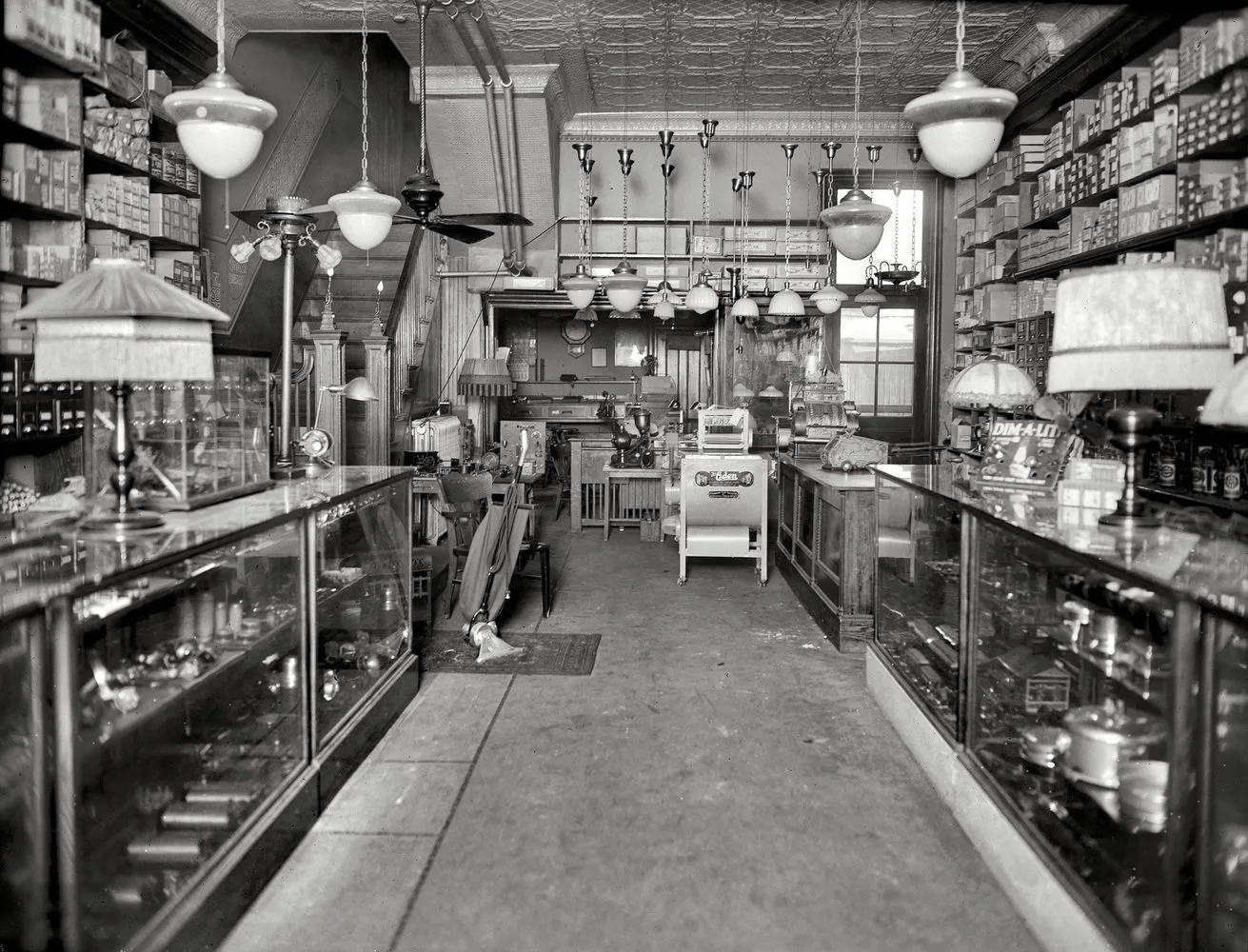
1923 year. Household appliances store, USA. Right in the center — a washing machine
The construction of washing machines becomes more advanced: wooden tubs lined with copper sheets go into the past and are replaced by enamel-coated steel tubs. However, safety is still not a priority — the internal parts of washing machines remain exposed.
One of the first companies to hide them in a plastic casing was Whirlpool. They also ensured that spin rollers only rotated in one direction to prevent injuries.
1930s
Washing machines became cheaper and more accessible, and sales expanded beyond the USA to Europe. The designs began to include drain pumps with electric motors and mechanical timers — for the first time, housewives could set the washing time. The first tumble dryers appeared but were still prohibitively expensive.
The peak of the Great Depression reduced demand for household appliances among ordinary Americans, and housewives once again started visiting public laundromats. In 1937, the first laundromat or self-service laundry was opened, where each stage of washing to drying was handled by the visitor themselves.
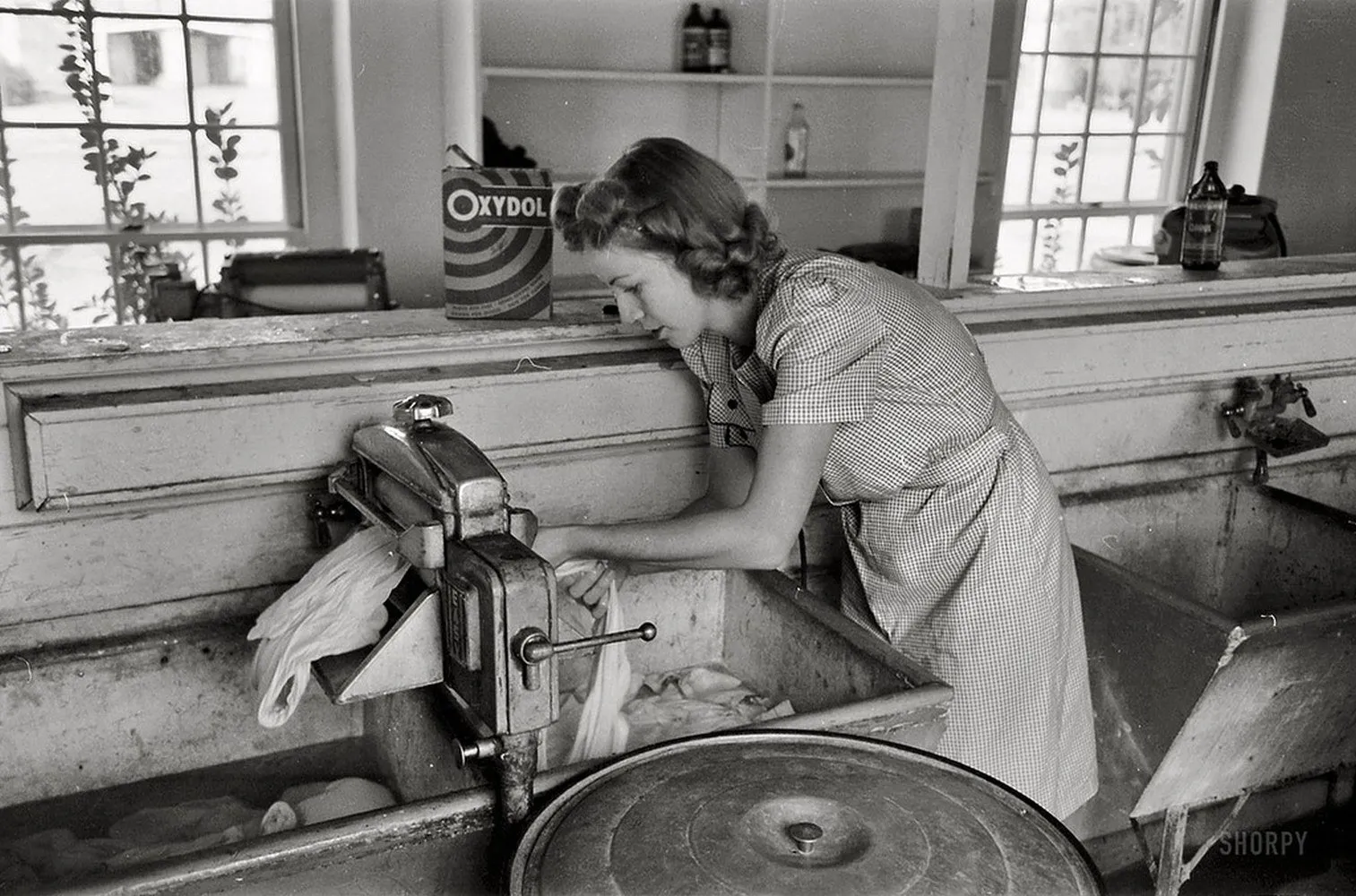
1930s. In a public laundromat
1940s
At the end of the 1940s, two American companies, Bendix Corporation and General Electric, announced the launch of the first fully automatic washing machine that washes, rinses, and wrings out water in one cycle.
No more human effort required: the program starts the machine, pressure relays and electromagnetic valves shut off water supply after filling the tub, a thermostat controls water temperature, and a timer manages operation time.
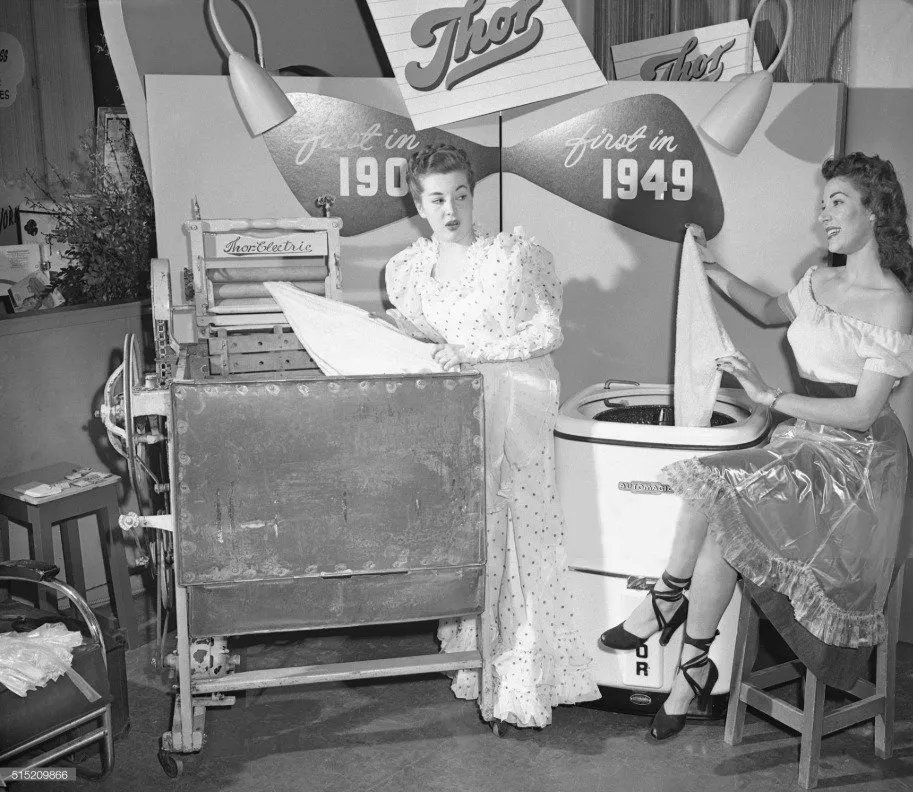
1950s
At the beginning of the 1950s, washing machines gained a new feature — washing programs tailored to each type of laundry, and the function of manual rollers was now performed by an automated wringer — a centrifuge.
The first automatic machines were adopted in Europe. There, drum-type machines were preferred over the activator type used in America, which had a longitudinal shaft with blades built into the drum.
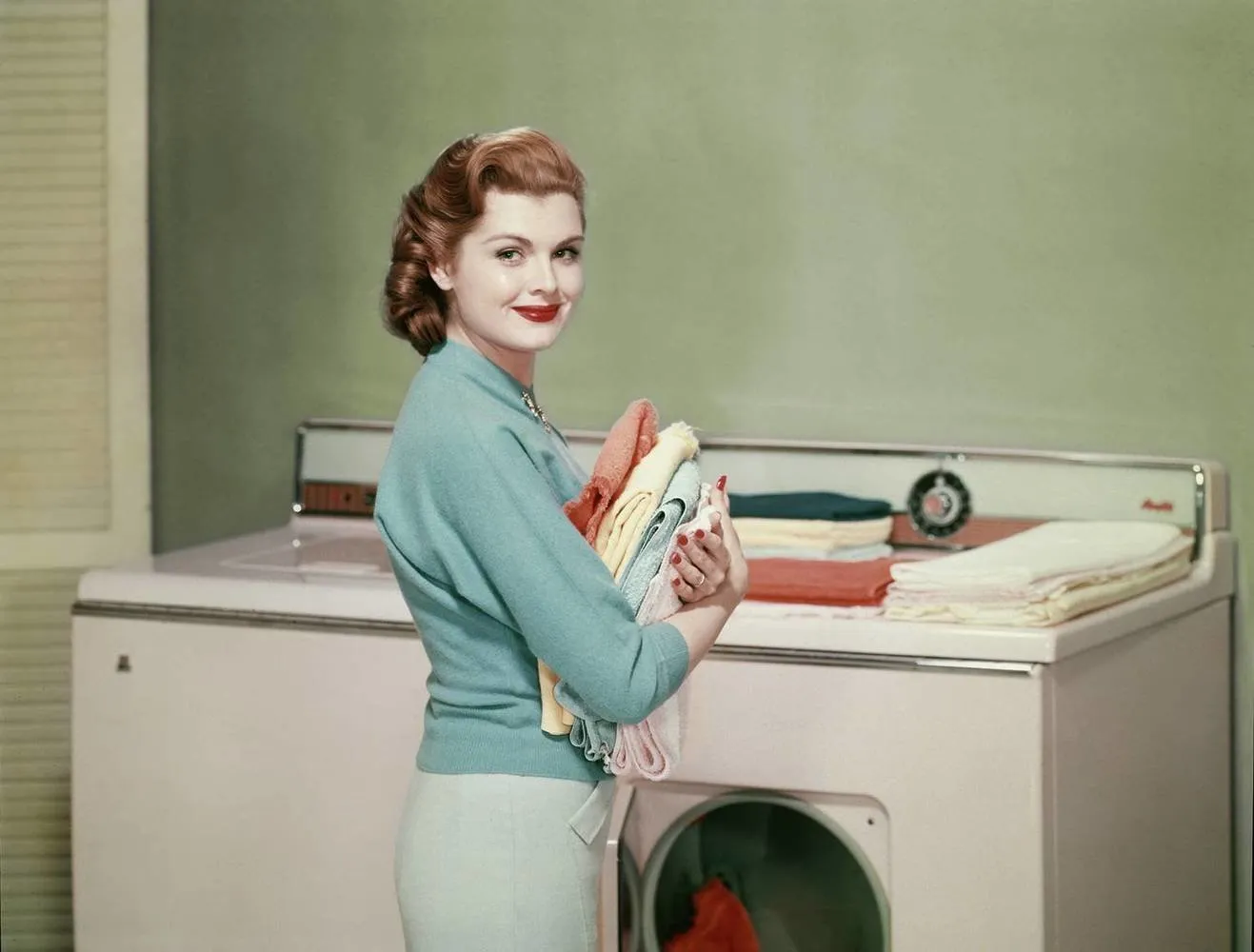
In the USSR, advanced automatic models were not available in stores. The first Soviet washing machines were produced in Riga, Kirov, and Cheboksary. Water had to be manually filled and drained from them, and until the 1970s, they were fairly primitive models. However, there were some advantages: for example, if any part broke down, it could be repaired manually.
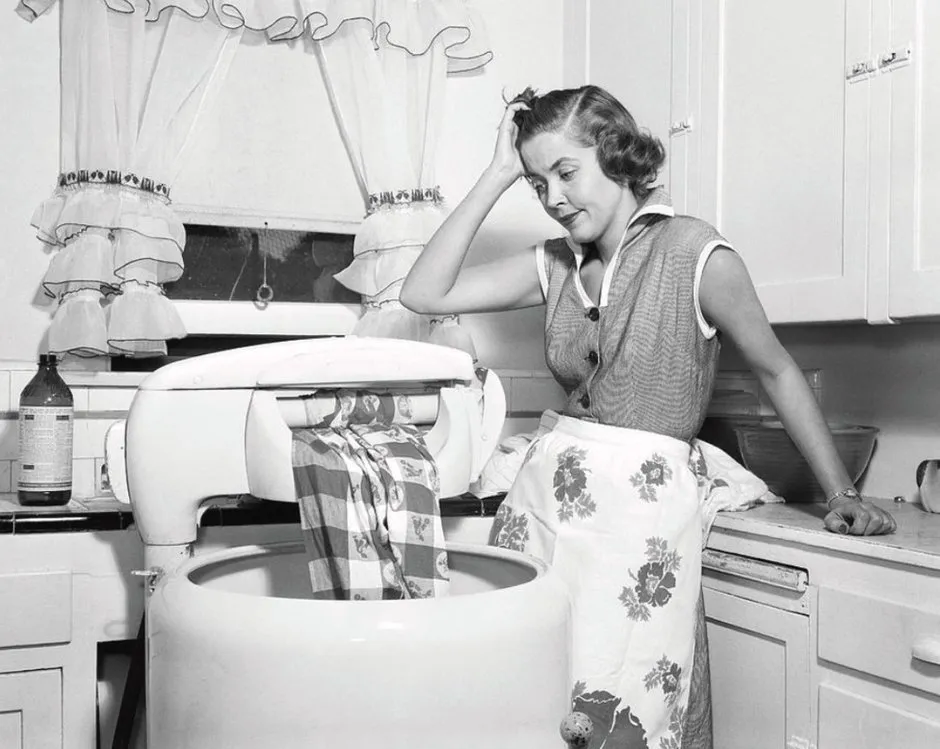
1970s
The first Soviet automatic washing machine, the "Vyatka-Automatic," appeared in the late 1970s. A precise copy of Ariston washing machines, it was produced at a factory in Kirov under license from an Italian company. However, it was soon discontinued due to insufficient power supply for the machine. The corrected and improved model "Vyatka-12" (where 12 denotes the number of washing programs) was launched in 1980.
Ads for washing machines in the USSR and USA during the 1970s
In the USA, meanwhile, engineers were developing washing machines based on microprocessors and implementing innovations to reduce water consumption and save electricity during the wash cycle.
1990s
American engineers developed a control system for washing machines based on
More articles:
 8 Apartments with a Spring Vibe
8 Apartments with a Spring Vibe 5+ Practical Tips on How to Shield Yourself from Nosy Neighbors on the Country Plot
5+ Practical Tips on How to Shield Yourself from Nosy Neighbors on the Country Plot Personal Experience: How We Decorated a Kitchen for 50 Thousand Rubles
Personal Experience: How We Decorated a Kitchen for 50 Thousand Rubles Paradise in a Hut: How Lovers Built a House on a Vineyard
Paradise in a Hut: How Lovers Built a House on a Vineyard How to Survive in an Apartment During Heatwave: 6 Tips
How to Survive in an Apartment During Heatwave: 6 Tips Choosing a Color Palette for the Bedroom: 6 Tips from Designers
Choosing a Color Palette for the Bedroom: 6 Tips from Designers How to Make a Hugge from Cheap Material Available on Every Farm
How to Make a Hugge from Cheap Material Available on Every Farm How to Quickly Clean Tile: Tips You Didn't Know About
How to Quickly Clean Tile: Tips You Didn't Know About